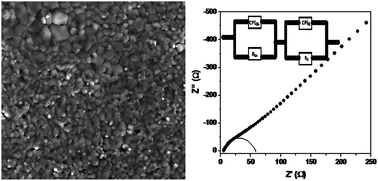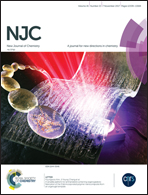Experimental and theoretical investigation of the high dielectric permittivity of tantalum doped titania
Abstract
A series of tantalum doped titania samples were synthesized by a solid-state reaction method and thoroughly characterized by X-ray diffraction (XRD), scanning electron microscopy (SEM) and electron paramagnetic resonance spectroscopy (EPR). The electrical behavior of the samples has been investigated by dielectric and impedance spectroscopy. The XRD study reveals that the pristine and doped titania crystallizes in the rutile phase. EPR studies suggest that some of the Ti4+ is reduced to Ti3+ attributed to doping of Ta5+ in the titania lattice. Furthermore, these materials exhibit high dielectric permittivity which may be due to the conventional inter barrier layer capacitance effect. Among the samples, the 1 mol% Ta5+ doped TiO2 composition shows the highest dielectric permittivity. Upon increasing the amount of Ta5+, the dielectric permittivity decreases and the dielectric loss slightly increases. The dielectric permittivity of the Ta-doped TiO2 system is found to be lower than that of the previously reported Nb-doped TiO2 system. Based on DFT calculations it is found that the diffused nature of the 5d orbital and lower polarizability of Ta are responsible for the lower dielectric permittivity of Ta doped TiO2 in comparison to Nb doped TiO2 systems.



 Please wait while we load your content...
Please wait while we load your content...